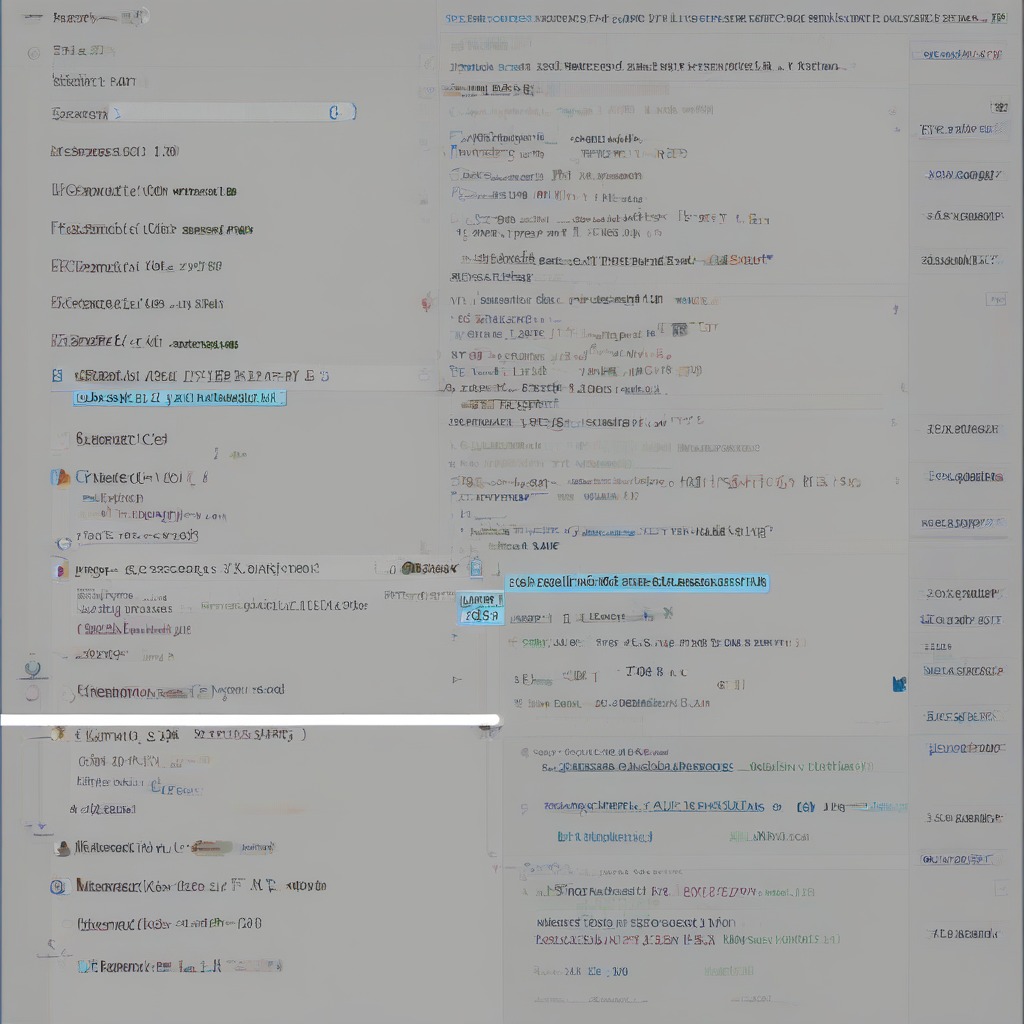Landing Page Optimization for Google Ads: A Comprehensive Guide
In the competitive world of digital marketing, Google Ads reigns supreme. But simply launching a campaign isn’t enough to achieve your desired results. The real magic happens when you pair your ads with a landing page that’s designed to convert. A well-optimized landing page can dramatically boost your conversion rates, improving your return on investment (ROI) and driving your business forward.
This comprehensive guide will equip you with the knowledge and strategies to create a landing page experience that captivates visitors, inspires trust, and ultimately converts them into valuable customers.
1. Alignment Is Key: Syncing Ads and Landing Pages
The first crucial step is ensuring your Google Ads and landing page are tightly aligned. This means creating a seamless experience where visitors feel a natural flow from the ad they clicked on to the landing page.
- Consistent Messaging: Your ad copy and landing page headline should convey the same message, using similar keywords and language. This creates a sense of familiarity and reinforces the value proposition.
- Clear Call-to-Action (CTA): The CTA on your landing page should directly correlate with the action promised in the ad. If the ad encourages users to “Download Now,” the landing page should prominently feature a “Download” button.
- Visual Consistency: Maintain visual consistency between the ad and landing page. Use similar colors, imagery, and fonts to create a cohesive brand experience. For example, if your ad features a product image, display it prominently on the landing page.
2. Design Matters: Creating a User-Friendly Experience
Your landing page design is the visual ambassador for your brand. It’s the first impression visitors receive, and it can either draw them in or send them running for the hills.
2.1 Prioritize Clarity and Simplicity
- Single-Page Focus: Resist the temptation to cram too much information on your landing page. Keep it concise and focused on a single goal, whether it’s a product purchase, a form submission, or a free trial sign-up. Avoid overwhelming visitors with too many options.
- Minimalist Design: Embrace white space and a clean layout. This makes your content more readable and visually appealing. Avoid excessive graphics or distracting elements that can clutter the page.
- Above-the-Fold Content: Ensure that the most important information, including your headline, value proposition, and CTA, appears above the fold (visible without scrolling). This captures attention and encourages immediate engagement.
2.2 The Power of Visuals
- High-Quality Images and Videos: Use high-resolution visuals that enhance your message and create a positive impression. Choose relevant imagery that aligns with your brand and product. Videos can be particularly effective in showcasing features and benefits in a compelling way.
- Strategic Placement: Position images and videos strategically to draw the eye and enhance readability. Consider using hero images that visually capture the essence of your landing page.
2.3 Mobile-First Approach
- Responsive Design: Ensure your landing page is responsive and displays seamlessly on all devices, especially mobile. With mobile devices dominating internet access, optimizing for mobile is non-negotiable.
- Touch-Friendly Layout: Design elements like buttons and form fields should be easy to tap and interact with on mobile devices. Avoid overly small text or buttons that are difficult to click.
3. Compelling Copywriting: Persuading Visitors to Convert
While design sets the stage, copywriting is the voice that engages and persuades visitors to take action. Strong copywriting can make or break your landing page’s success.
3.1 Clear and Concise Headlines
- Benefit-Driven Headlines: Focus on the benefits your product or service offers, not just its features. Tell visitors what they’ll gain by converting.
- Actionable Language: Use verbs that inspire action and encourage visitors to take the desired step. For example, “Get a Free Trial Now” is more effective than “Learn More.”
- Specificity: Use numbers, data, or specific examples to add credibility and make your claims more persuasive. For instance, “Boost Your Sales by 20% with Our Solution” is more impactful than “Increase Your Sales.”
3.2 Engaging Body Copy
- Problem-Solution Approach: Start by identifying a problem your target audience faces and then showcase how your product or service solves it. This builds empathy and relevance.
- Social Proof: Include testimonials, customer reviews, or awards to demonstrate the credibility and effectiveness of your offering. Social proof builds trust and reduces perceived risk.
- Clear Benefits and Features: Highlight the key benefits and features of your product or service in a clear and concise way. Use bullet points or lists for easy readability.
3.3 Strong Call-to-Action
- Clear and Concise: Your CTA should be short, direct, and tell visitors exactly what to do next. Use action verbs like “Download,” “Sign Up,” or “Get Started.”
- Visually Appealing: Make your CTA button stand out visually. Use contrasting colors, a clear font, and ample space around the button to draw attention.
- Sense of Urgency: Consider adding a sense of urgency to your CTA, such as a limited-time offer or a countdown timer, to encourage immediate action.
4. Testing and Optimization: Iterating for Success
Landing page optimization is an ongoing process. Don’t assume your first draft is perfect. The real magic happens through continuous testing and refinement.
4.1 A/B Testing: Comparing Different Versions
- Hypothesis-Driven Testing: Identify specific elements you want to test, such as headlines, CTA buttons, or images. Formulate clear hypotheses about how these changes will affect your results.
- Controlled Experimentation: Divide your Google Ads traffic into two or more groups. Each group receives a different version of your landing page (e.g., one with a blue CTA button, another with a red button). This allows you to compare performance and identify the most effective variations.
- Track Key Metrics: Monitor key metrics like conversion rate, bounce rate, and time spent on page. This data will reveal which variations are performing better and help you make informed decisions.
4.2 Optimizing for User Experience (UX)
- Heatmaps and Scroll Maps: Use tools like Hotjar or Crazy Egg to generate heatmaps and scroll maps that visually represent user behavior on your landing page. This shows you where users are clicking, hovering, and scrolling, revealing areas for improvement.
- User Feedback: Collect user feedback through surveys, polls, or comment sections. Ask users what they liked or disliked about your landing page and what could be improved. This gives you valuable insights directly from your target audience.
5. Beyond the Basics: Advanced Landing Page Strategies
Once you have a solid foundation in landing page optimization, explore these advanced strategies to further elevate your conversion rates.
5.1 Personalized Landing Pages
- Dynamic Content: Use dynamic content to tailor landing pages based on user demographics, interests, or past behavior. This creates a more personalized experience that resonates with individual visitors.
- Custom Audiences: Leverage Google Ads’ custom audience targeting to create landing pages specifically for different groups of visitors. This allows you to deliver highly relevant content and increase conversions.
5.2 Lead Generation Forms
- Streamlined Forms: Keep your lead generation forms short and simple. Only request essential information to minimize friction and increase completion rates.
- Pre-Filled Forms: If you have user data, pre-fill form fields with known information to reduce the effort required for visitors.
5.3 Multi-Step Landing Pages
- Progress Bar: Use a progress bar to guide users through a multi-step process. This provides a clear sense of progress and encourages completion.
- Clear Navigation: Ensure that users can easily navigate between steps and understand how to move forward.
6. Conclusion: Landing Page Optimization for Ongoing Success
Landing page optimization is an ongoing journey, not a one-time event. By continually testing, analyzing, and refining your landing pages, you can ensure they remain effective and achieve your desired conversion goals.
Remember, a well-optimized landing page isn’t just about aesthetics or copywriting. It’s about understanding your target audience, aligning your message, and creating a seamless experience that inspires action. By embracing these strategies, you can unlock the full potential of your Google Ads campaigns and drive your business to new heights.





